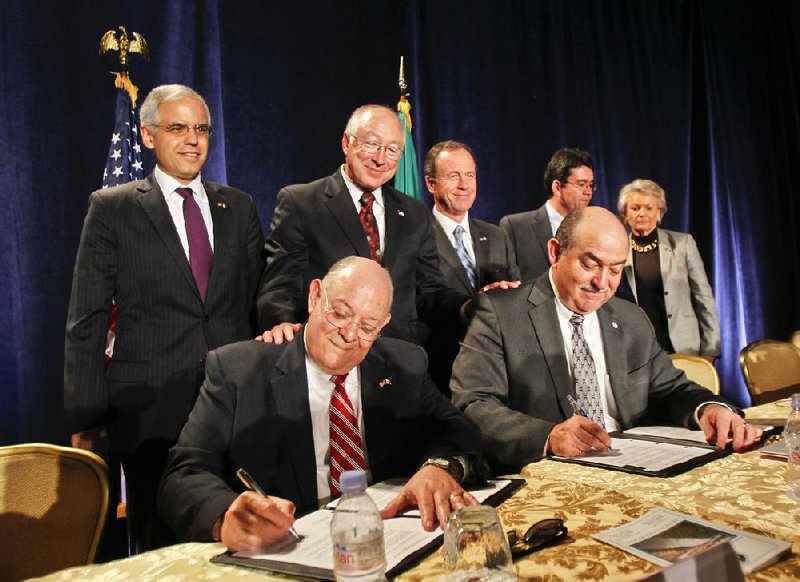CORONADO, Calif. — The United States and Mexico agreed Tuesday to rewrite rules on sharing water from the Colorado River, capping a five-year effort to create a united front against future droughts.
The far-reaching agreement signed near San Diego gives Mexico badly needed storage capacity by granting rights to put some of its river water in Lake Mead, which stretches across Nevada and Arizona.
Mexico will forfeit some of its share of the river during shortages, bringing itself in line with western U.S. states that already have agreed how much they will surrender in years when waters recede.
Water agencies in California, Arizona and Nevada also will buy water from Mexico, which will use some of the money to upgrade its infrastructure.
U.S. Interior Secretary Ken Salazar called the agreement the most important international accord on the Colorado River since a 1944 treaty.
“We have chosen cooperation and consensus over discord,” he said.
The agreement, coming in the final days of the administration of Mexican President Felipe Calderon, is a major amendment to the 1944 treaty considered sacred by many south of the border. The treaty grants Mexico 1.5 million acrefeet of river water each year — enough to supply about 3 million homes — making it the lifeblood of Tijuana and other cities in northwest Mexico.
Mexico will surrender some of its allotment when the water level in Lake Mead drops to 1,075 feet and reap some of the surplus when it rises to 1,145 feet, according to a summary of the agreement prepared by the Metropolitan Water District of Southern California, which will buy some of Mexico’s water.
The agreement expires in five years and is being billed as a trial run, potentially making it more palatable in Mexico.
“These are big political steps for Mexico to take,” said Jeffrey Kightlinger, Metropolitan’s general manager. “Chances are we won’t have a surplus and we won’t have a shortage but, if we do, we’ll have the guidelines in place on how we’re going to handle it.”
In 2007, facing an eightyear drought, California, Arizona and Nevada agreed on how much each state should sacrifice during shortages on the 1,450-mile river that flows from the Rocky Mountains to Mexico. That same year, the U.S. and Mexico promised to work on ways to jointly address shortages.
The negotiations gained a sense of urgency for Mexico in 2010 after a magnitude-7.2 earthquake damaged canals and other infrastructure, forcing it to store water temporarily in Lake Mead.
“They have some storage, but it’s not enough for drought and emergencies,” said Halla Razak, Colorado River program director at the San Diego County Water Authority.
Roberto Salmon, Mexico’s representative to the International Boundary and Water Commission, said the pact was the latest sign of improved cooperation with the U.S.
The Colorado River is also a key source of water for Colorado, New Mexico, Utah and Wyoming.
Front Section, Pages 2 on 11/21/2012
